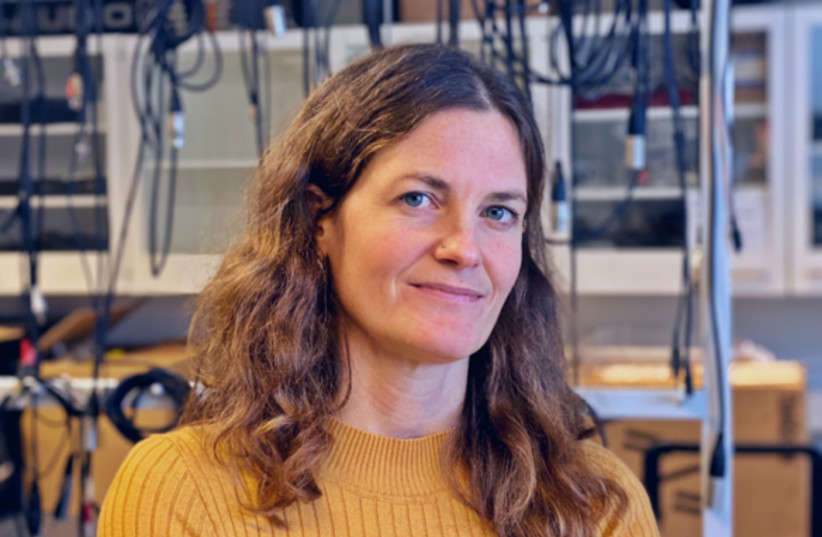Researchers at the University of Copenhagen’s biology department and colleagues in Zurich and elsewhere have found that people who do well on human empathy tests are also measurably better at decoding the emotional sounds of animals.
Such individuals are better at knowing when an animal is having a good or bad time than other people are. Other factors, such as age and doing work related to animals, are also shown to play a crucial role – and if you are between 20 and 29 years old and empathetic towards fellow humans, your chances are even greater.
This marks the first time that so many different animal sounds were tested on humans, both in terms of arousal (stress/excitement) and valence (the charge of emotions: positive vs negative).
The study, titled “Age, empathy, familiarity, domestication and call features enhance human perception of animal emotion expressions,” has just been published in the journal Royal Society Open Science. The most surprising result for the researchers was that their results showed a marked correlation between empathy for humans and animals.
A total of 1,024 people from 48 different countries participated in the study, which included recorded vocalizations (calls) of six different mammals – goats, cattle, Asian wild Przewalski’s horses, domesticated horses, pigs and wild boars – which were played to participants along with the sounds of human gibberish said by actors.
On average, humans can “guess” accurately more often than if they would roll a single die and get random bids, according to the study. For arousal, the correct answers amounted to 54.1%; for valence, the figure was slightly higher at 55.3%.
Participants were also asked to provide information about a range of factors including their age, gender and level of education, just as they wrapped up their participation with an empathy test, and the researchers observed several interesting factors in relation to how well humans understand animal sounds.
First and foremost, the results are significantly better when participants work with animals – even when the task was to listen to animals other than the ones that they are immediately familiar with. The results suggest that an intimate knowledge of animals generally promotes the understanding of their emotional lives.
“This is good news for animal welfare,” commented Elodie Briefer, a behavioral ecologist at the Danish university. “For example, farmers who want to ensure that their pigs are thriving are well-equipped to capture that.”
People in their 20s tend to do better
WHILE BETTER scores were found among adults in their 20s, participants under the age of 20 were the worst performers, and the number of correct answers decreased with age. There was no measurable difference between men and women, despite the popular assumption that women are more empathetic and emotionally intelligent. Neither was there a measurable difference between whether the subjects had children or not.
“It was really surprising for me and very interesting that those who performed well in a recognized test to assess people’s empathic level toward other people were also significantly better at understanding the emotional lives of animals,” Briefer noted.
This may be because we in the mammalian family share common traits when it comes to how we express the intensity of our emotions such as arousal – giving participants some innate ability to interpret it, making results less dependent on acquired knowledge, the researcher said.
“Roughly speaking, higher-frequency sounds [in addition to other features] are often a sign of higher arousal, and lower-frequency sounds a sign of lower. If a subject uses the same standard to interpret animal sounds that he or she would use to understand a human, then it is often correct. We express arousal more similarly than valence because it is linked to stress pathways, which are evolutionarily well preserved in mammals,” explained Briefer.
“Today, animal welfare is defined by the emotional life of animals, so new knowledge provided by this study is important for both basic and applied research. On the one hand, it increases the understanding of animal emotions and opens opportunities to improve that understanding,” she said. “The knowledge contributed by the study showed the path to concrete ways to work on improving animal welfare through an understanding of their emotional lives.”
For example, the development of an app where AI supports those who work with animals offers promising perspectives.
“But it is also important to note that there is nothing to prevent someone from beginning to improve their own skills now if they interact with animals on a daily basis,” Briefer said.
“When students try the test in class, they obtain an average of 50% of correct answers on the first try,” she said. “After we talk about the sounds and knowledge that we have about animal vocalizations, they improve. On their second attempts, they typically get above 70% correct.
“It is natural to explore this potential in future studies,” Briefer concluded. “I definitely think that it’s possible to practice and improve this ability for the vast majority of people.”

